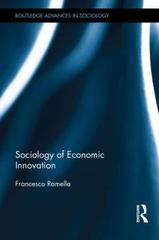Question
In a simplified model, let's examine the choices an investor must make when facing a potential liquidity constraint. A liquidity constraint occurs when an event
In a simplified model, let's examine the choices an investor must make when facing a potential liquidity constraint. A liquidity constraint occurs when an event happens that requires an immediate expenditure in the form of cash. For instance, an unexpected investment opportunity occurs, an accident happens, etc. In general, investors prefer to not keep cash, as it prevents them from making more lucrative returns on investments. However, the potential need for cash causes a tension in the investor's decision-making. To examine this, let's assume an investor's vNM utility function over his returns on an investment is () = ln(). For simplicity, we will assume the investor is deciding how to allocate $1 between short and long-term assets. With probability , he will face a liquidity constraint in the short-term and will gain a return equal to the amount of his wealth invested in short-term assets (for simplicity, we are assuming his long-term assets are worth $0 in this case, instead of the more realistic scenario in which they are worth something, but less than their original worth since they must be liquidated prior to maturity). With probability 1 , he will not face a liquidity constraint in the short-term and will gain a return equal to the amount of his wealth invested in short-term assets plus the amount of his wealth invested in long-term assets times , where > 1 is the return on long-term assets. As an example, if he invests $0.40 in the short-term asset and $0.60 in the long- term asset, then he will receive $0.40 with probability and $0.40 + $0.60 with probability 1 . Note the tension in this model comes from the fact that the investor would like to have the higher return of long-term assets, but risks losing his investment if he faces a liquidity constraint. In this environment, how much money will the investor invest in short-term assets? Hint: Set up the individual's expected utility function and maximize it with respect to , the amount he invests in short-term assets. Note if he invests in short-term assets, then he will be investing 1 in long-term assets. A. = R/(2(R-1)) B. = pR/(pR-1) C. = pR/(R-1) D. = R(p+1)/(R+1)
Step by Step Solution
There are 3 Steps involved in it
Step: 1

Get Instant Access to Expert-Tailored Solutions
See step-by-step solutions with expert insights and AI powered tools for academic success
Step: 2

Step: 3

Ace Your Homework with AI
Get the answers you need in no time with our AI-driven, step-by-step assistance
Get Started


